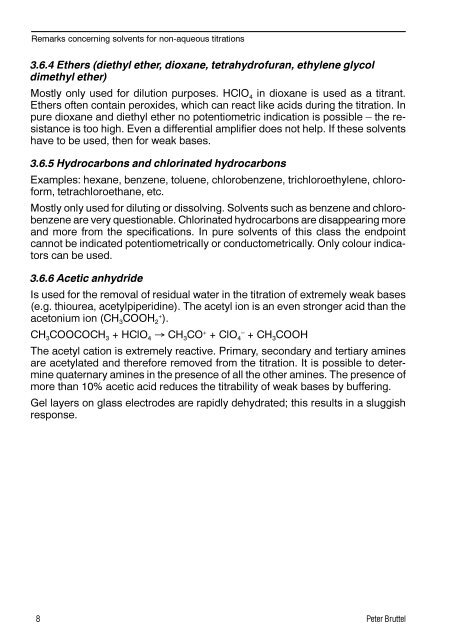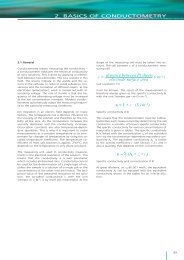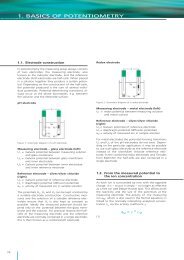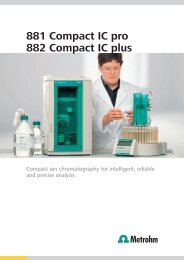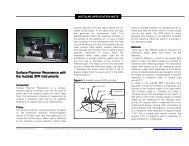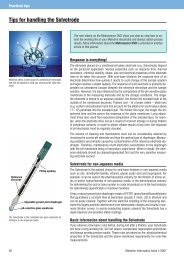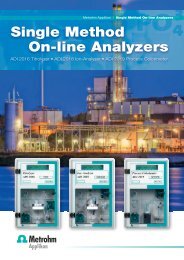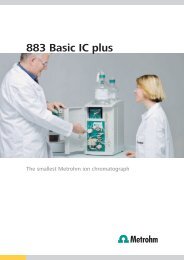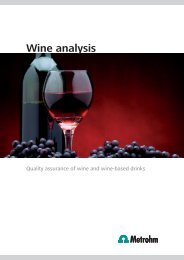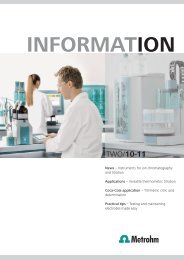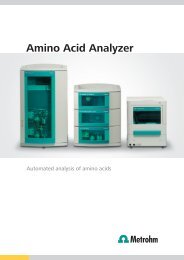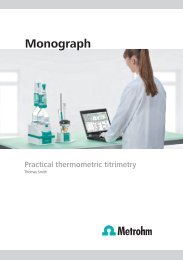Monograph - Metrohm
Monograph - Metrohm
Monograph - Metrohm
Create successful ePaper yourself
Turn your PDF publications into a flip-book with our unique Google optimized e-Paper software.
Remarks concerning solvents for non-aqueous titrations3.6.4 Ethers (diethyl ether, dioxane, tetrahydrofuran, ethylene glycoldimethyl ether)Mostly only used for dilution purposes. HClO 4 in dioxane is used as a titrant.Ethers often contain peroxides, which can react like acids during the titration. Inpure dioxane and diethyl ether no potentiometric indication is possible – the resistanceis too high. Even a differential amplifier does not help. If these solventshave to be used, then for weak bases.3.6.5 Hydrocarbons and chlorinated hydrocarbonsExamples: hexane, benzene, toluene, chlorobenzene, trichloroethylene, chloroform,tetrachloroethane, etc.Mostly only used for diluting or dissolving. Solvents such as benzene and chlorobenzeneare very questionable. Chlorinated hydrocarbons are disappearing moreand more from the specifications. In pure solvents of this class the endpointcannot be indicated potentiometrically or conductometrically. Only colour indicatorscan be used.3.6.6 Acetic anhydrideIs used for the removal of residual water in the titration of extremely weak bases(e.g. thiourea, acetylpiperidine). The acetyl ion is an even stronger acid than theacetonium ion (CH 3 COOH 2+ ).CH 3 COOCOCH 3 + HClO 4 → CH 3 CO + –+ ClO 4 + CH 3 COOHThe acetyl cation is extremely reactive. Primary, secondary and tertiary aminesare acetylated and therefore removed from the titration. It is possible to determinequaternary amines in the presence of all the other amines. The presence ofmore than 10% acetic acid reduces the titrability of weak bases by buffering.Gel layers on glass electrodes are rapidly dehydrated; this results in a sluggishresponse.8 Peter Bruttel


